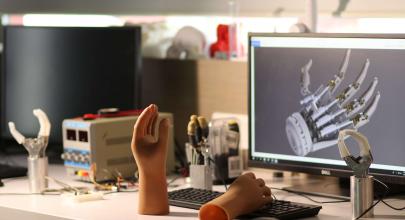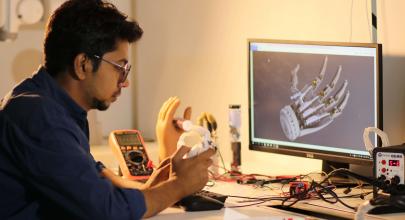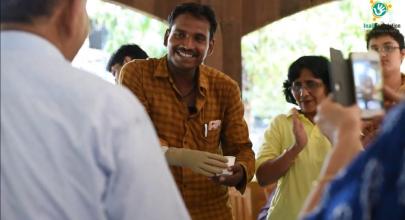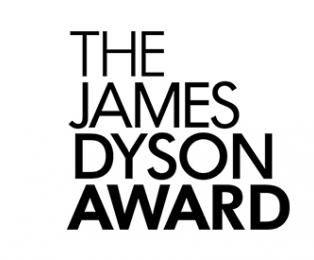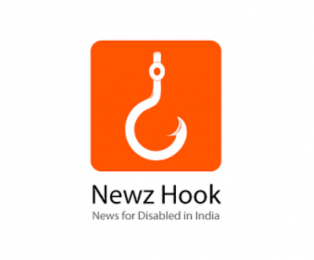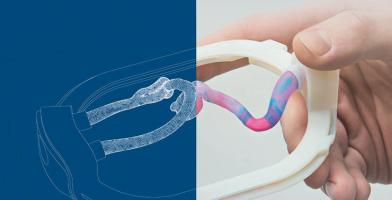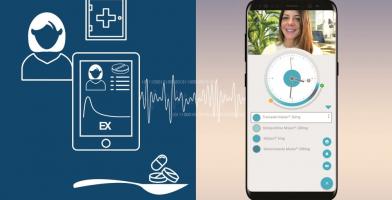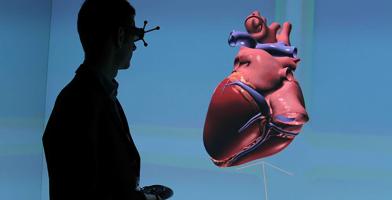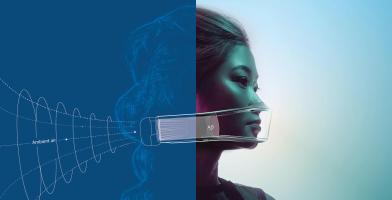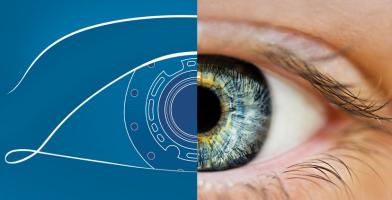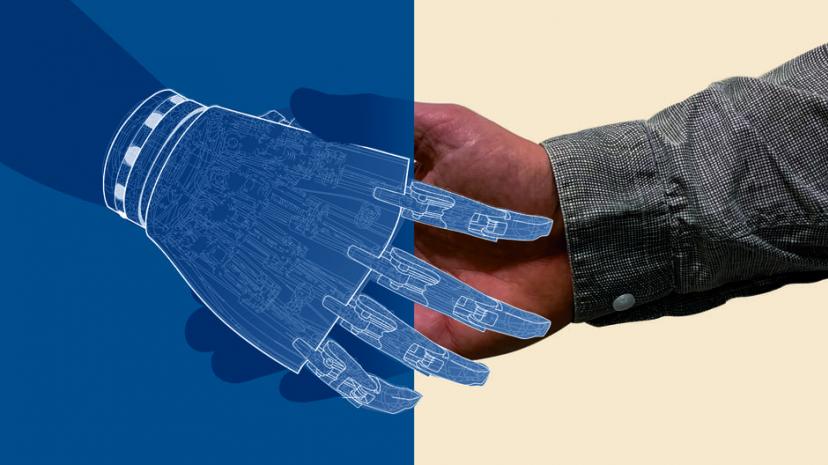

IF WE democratize on demand artificial limbs fabrication, can we help anyone regain independence?
The world is home to more than 22 million people with disabilities, with children making up for nearly 8 million of that number. Due to the cost and lack of accessibility, most of these people never get the help they need. One of the most significant problems with the current prosthetic devices is that the vast majority of them are very costly, nearly 30 to 40 thousand dollars. When we talk about developed countries like the USA, the insurance companies in the USA reimburses about 3000 dollars. So these devices are available to only a handful of people living in the United States. But, it remains a significant problem in a country like India to get proper prosthetic care because of affordability.
Inali Arms operates by detecting brain signals
BREAKTHROUGH IDEA
Inali Arms is India’s most affordable bionic arm for the differently-abled. Unlike most pros-thetics that are connected to muscle movements, Inali Arms operates by detecting brain signals. This makes it more accurate as opposed to muscle movements which can easily be misjudged. Even for people with burns or body fat, or even simple sweating, the convention-al prosthetic arms can run a risk of malfunction or zero detection of signals. It mimics tech-nology similar to its imported counterparts, but with cost-effective alternatives.
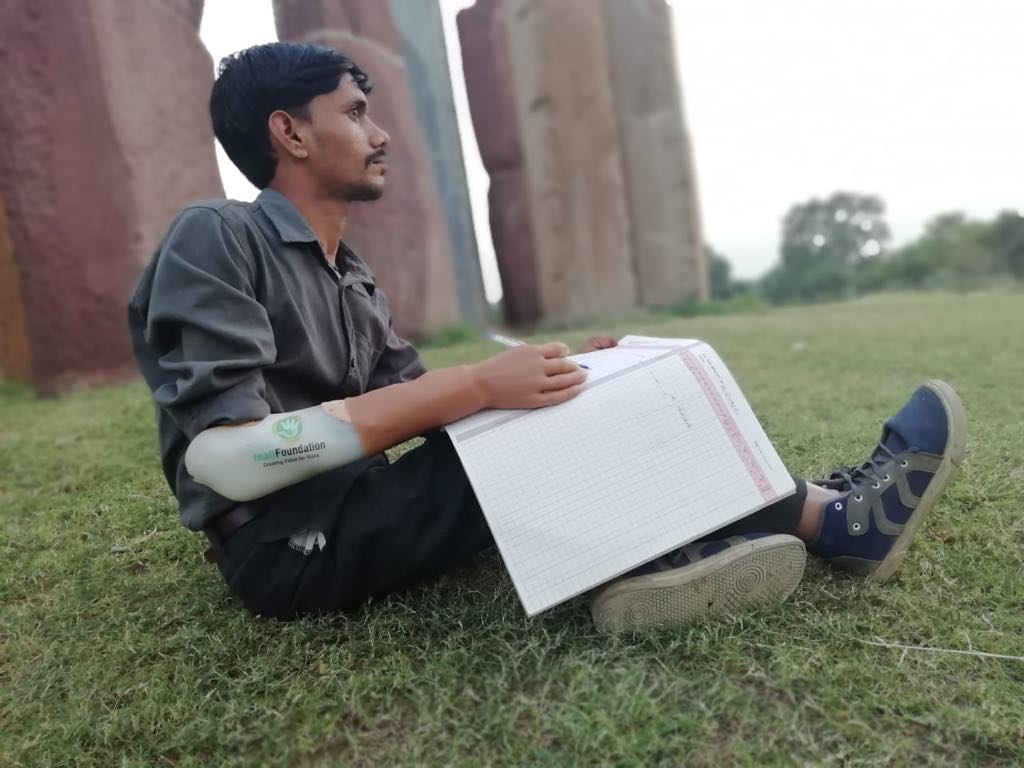
• Sensors: The Inali arms has six different preprogrammed grip patterns with options for both precision and power grasps. The sensors detect brain signals and operate according-ly.
• Accuracy: The arms are designed with precision and accuracy to match the gripping mo-tion, opening motions and joint movement of the actual hand.
• Maintenance: Because the product is made in India, the arms have been made in a man-ner that the maintenance is least expensive, time-consuming and easy to repair. Our turn around time for maintenance is less than two days.
• Light Weight: The arms are lightweight but can easily lift anything up to 10 KG.
POSITIVE IMPACT ON THE SOCIETY
- GOAL 10: REDUCED INEQUALITIES
Inali reduces inequality within and among countries by designing for people living with upper limb amputation and who cannot afford prosthetic care a low cost electronic prosthetic hand.

BENEFITS TO USE THE 3DEXPERIENCE® PLATFORM
The 3DEXPERIENCE® platform has some of the most advanced tools that have helped us create designs of a bionic hand to mimic the action as close to an actual hand. This has eliminated a great deal of inaccuracy that otherwise is a peril of the design process. We have managed to not just save time in designing and prototyping the hands with utmost accuracy but have also managed to come up with multiple design versions to suit different needs of upper limb disability. In a nutshell, we have achieved accuracy that has helped us speed up the process of design and then executing the design into a fully functional bionic arm.
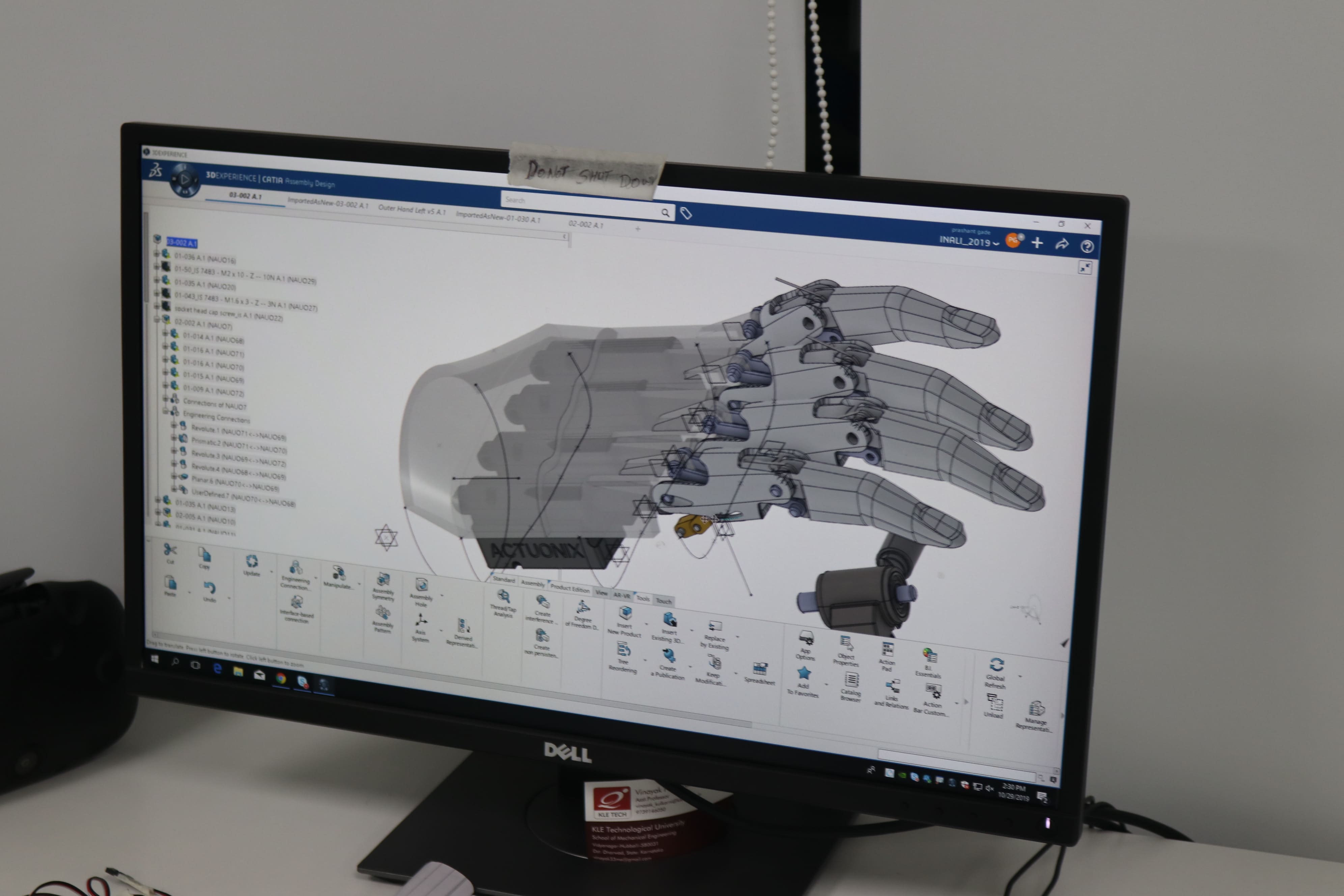
COLLABORATIVE & COLLECTIVE INTELLIGENCE
The 3DEXPERIENCE® platform has provided some of the most cost-saving and effective ways to visualize bionic arms that have never been done in India before. With such technological support coupled with constructive feedback has helped Inali assistive tech in creating a high-value bouquet of products that can change the face of affordable assistive healthcare not just in India but also in other developing nations and underdeveloped nations. One reason why Inali assistive tech products are affordable is because of the availability of a wide range of technology under one roof which is all access and extremely varied hence ironing any kinks that there can be in no time.
PLAY 3DEXPERIENCE
Meet the team
Prashant Gade: An engineering dropout, Prashant found his calling when he met a 7-year-old girl without arms. His desire to help her made him enquire about the available prosthetic arms in the market. To his shock, they cost Rs 24,00,000. He realized that affordable health care is a major roadblock in the development of the nation. What he couldn't buy, he decided to make it on his own. Today he has created affordable cosmetic arms, Myo Arms and will soon launch India’s first bionic arms.Prashant is the founder of Inali Foundation and Inali Assistive Tech and also heads the R&D department at Inali assistive Tech.
-
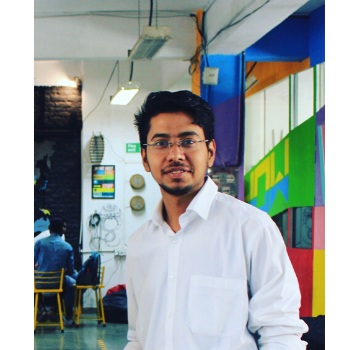 Prashant GadeCEO
Prashant GadeCEO
Similar projects
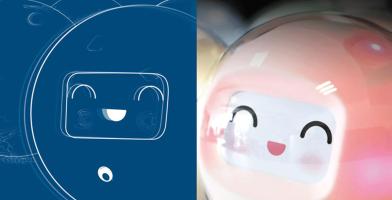
LEKA
IF WE give robotic companions to children, can we spark interaction & motivation to learn, play & progress?
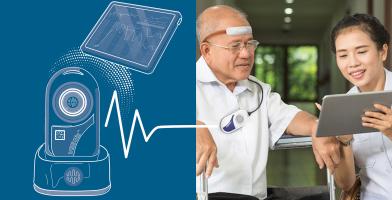
NEUROSERVO
IF WE detect neurological pathologies early using a brain-wave capturing device, can we save patient lives and reduce hospital costs?
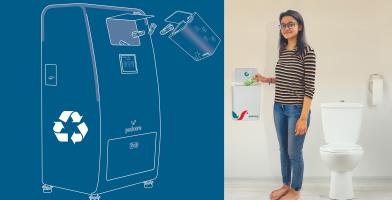
PADCARE LABS
IF WE embrace circular economy to dispose of sanitary napkins, can we empower women while reducing impact on the planet?
Submit your project
Do you think your project is the next big thing?
Join the team !
